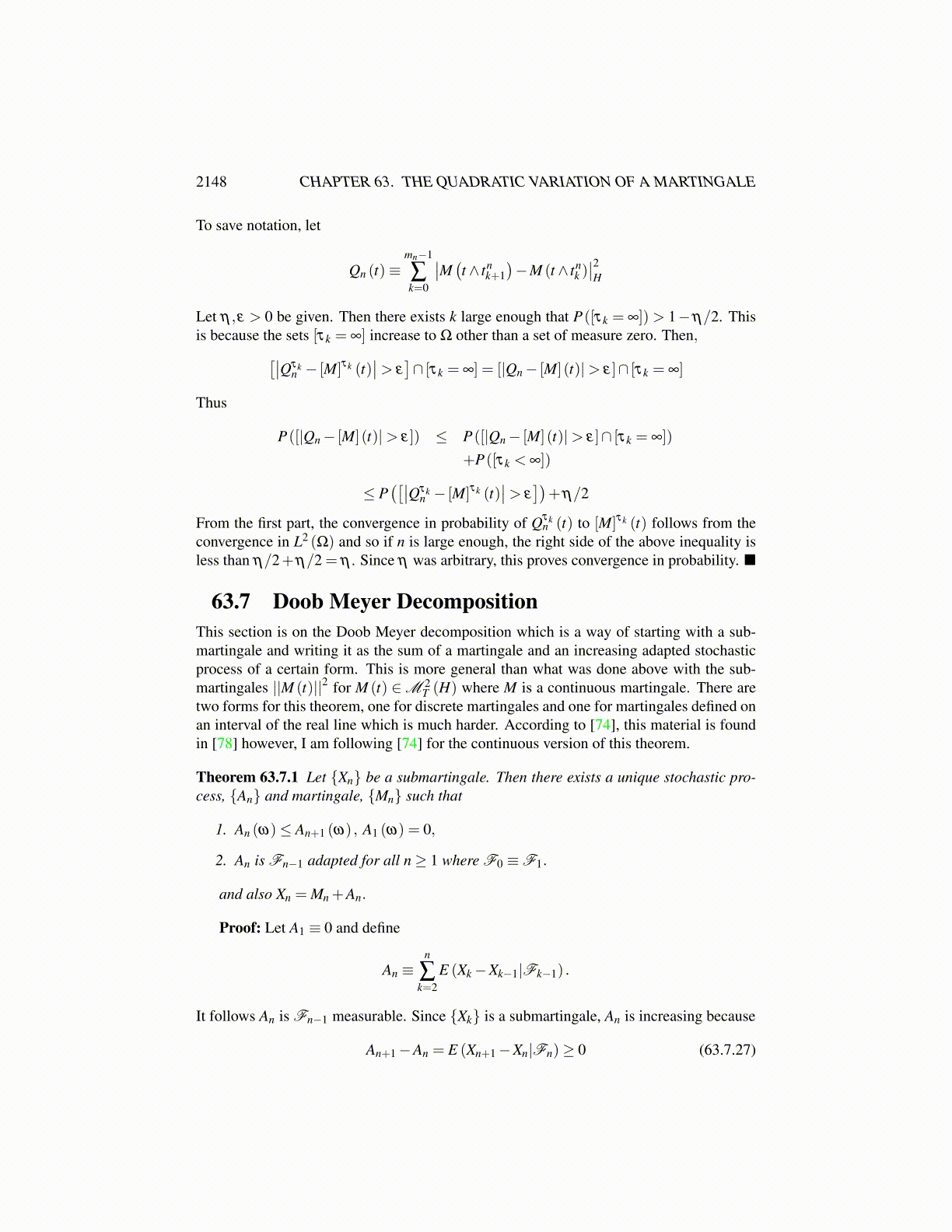
2148 CHAPTER 63. THE QUADRATIC VARIATION OF A MARTINGALE
where the stopping times were defined such that τnk+1 is the first time t > τn
k such that∣∣M (t)−M(τn
k
)∣∣2 = 2−n and τn0 = 0. Recall that limk→∞ τn
k = ∞ or T in the way it wasformulated earlier. Then it was shown that Pn (t) converged to a martingale P(t) in L1 (Ω).Then by the usual procedure using the Borel Cantelli lemma, a subsequence converges toP(t) uniformly off a set of measure zero. It is easy to estimate Pn (t) .
|Pn (t)| ≤ ∑k≥0
∣∣M (t ∧ τnk+1)∣∣2−|M (t ∧ τ
nk)|
2 = |M (t)|2 ≤M∗
This follows from the observation that(M(t ∧ τ
nk+1),M (t ∧ τ
nk))≤ 1
2
(∣∣M (t ∧ τnk+1)∣∣2 + |M (t ∧ τ
nk)|
2)
Then it follows that supt∈[0,T ] |P(t)(ω)| ≤M∗ (ω)≤C for a.e. ω. The quadratic variation[M] was defined as
|M (t)|2 = P(t)+ [M] (t)
Thus [M] (t) ≤ 2(M∗)2. Now consider the above limit in 63.6.26. From the assumptionthat M is uniformly bounded,∫ T
0∥RMn−RM∥2 d [M]≤
∫ T
04C2d [M] = 4C2 [M] (T )≤ 4C2 (2C2)< ∞
Also, by the continuity of the martingale, for each ω,
limn→∞∥RMn−RM∥2 = 0
By the dominated convergence theorem, and the fact that the integrand is bounded,
limn→∞
∫ T
0∥RMn−RM∥2 d [M] = 0.
Then from the above estimate and the dominated convergence theorem again, 63.6.26 fol-lows. Thus RM ∈ GM .
From the above lemma, it makes sense to speak of∫ t
0(RM)dM
and this is a continuous martingale having values in R. Also from the above argument, if{tnk
}mnk=0 is a sequence of partitions such that
limn→∞
max{∣∣tn
i − tni+1∣∣ , i = 0, · · · ,mn
}= 0,
then it follows thatmn−1
∑i=0
RM (ti)(M (t ∧ tk+1)−M (t ∧ tk))→∫ t
0(RM)dM
in L2 (Ω), this for each t ∈ [0,T ].Now here is the main result.